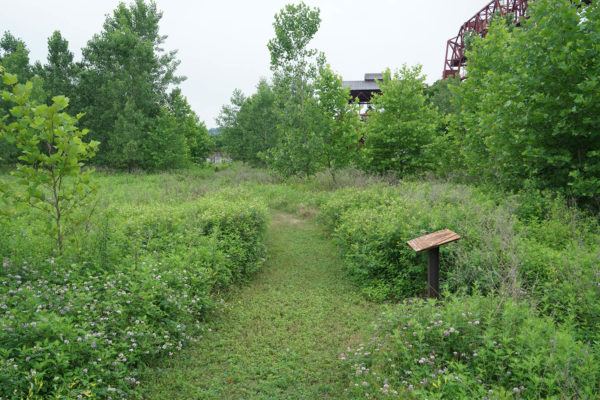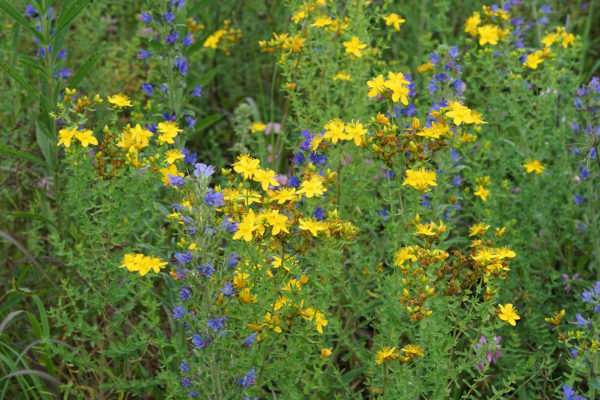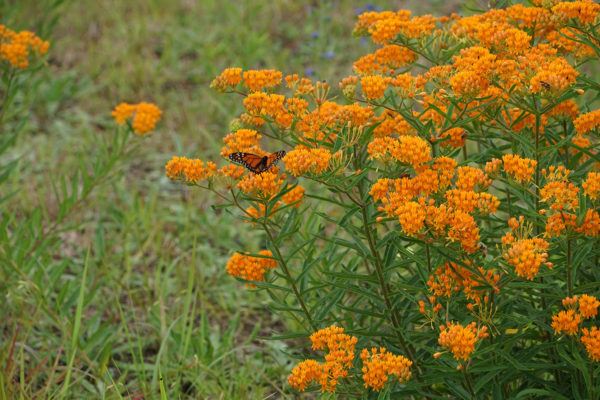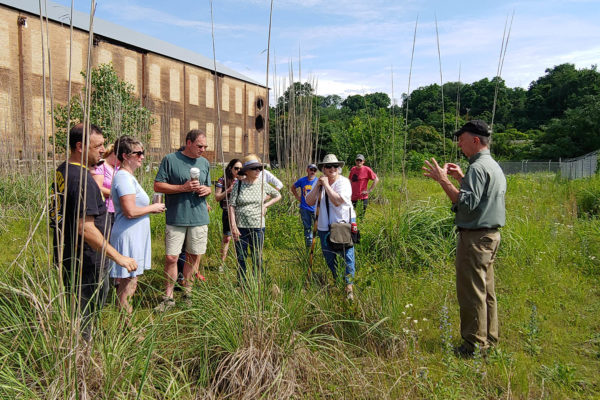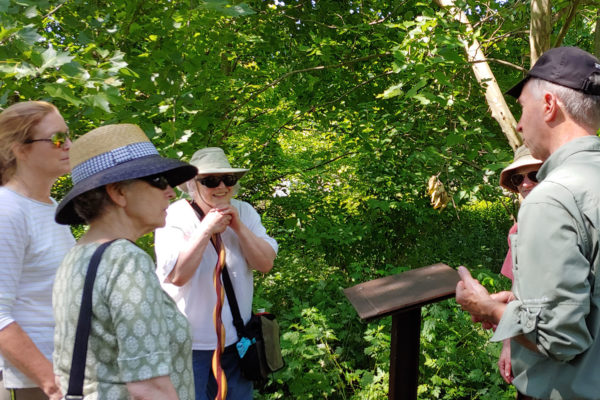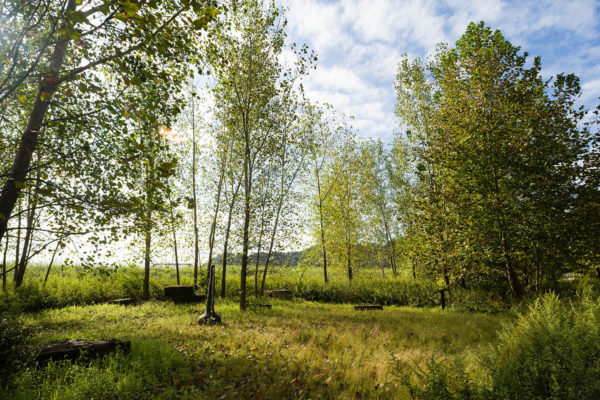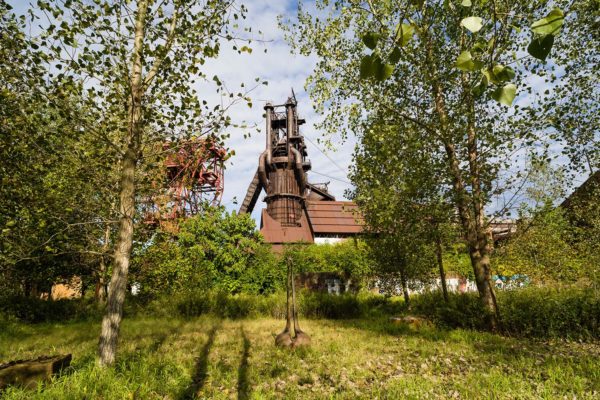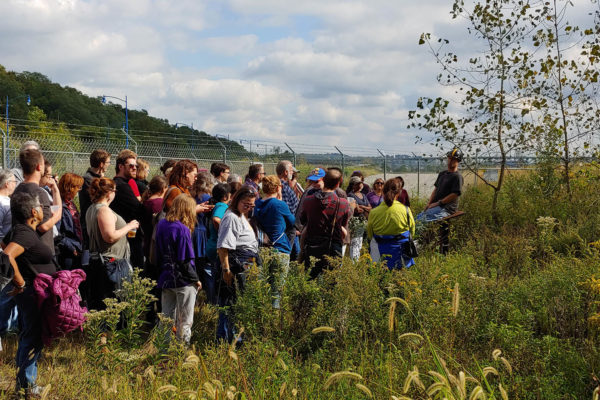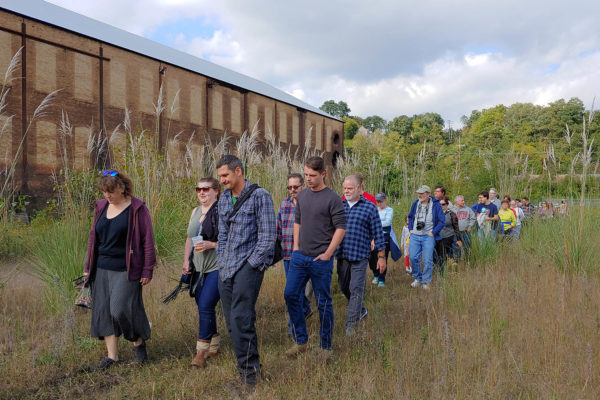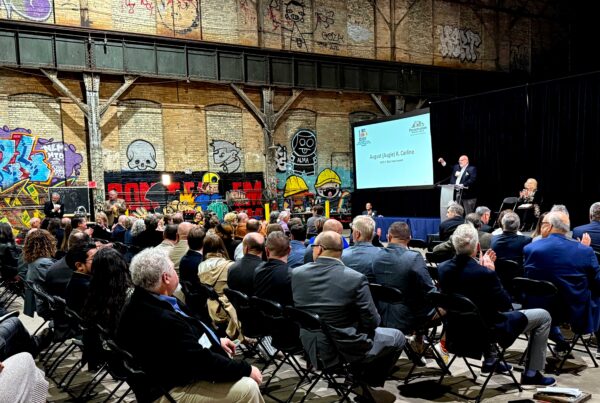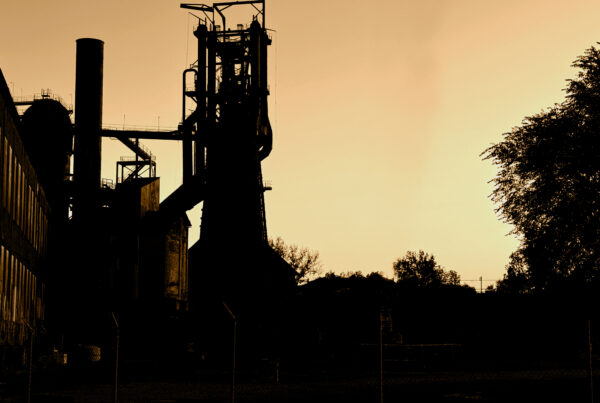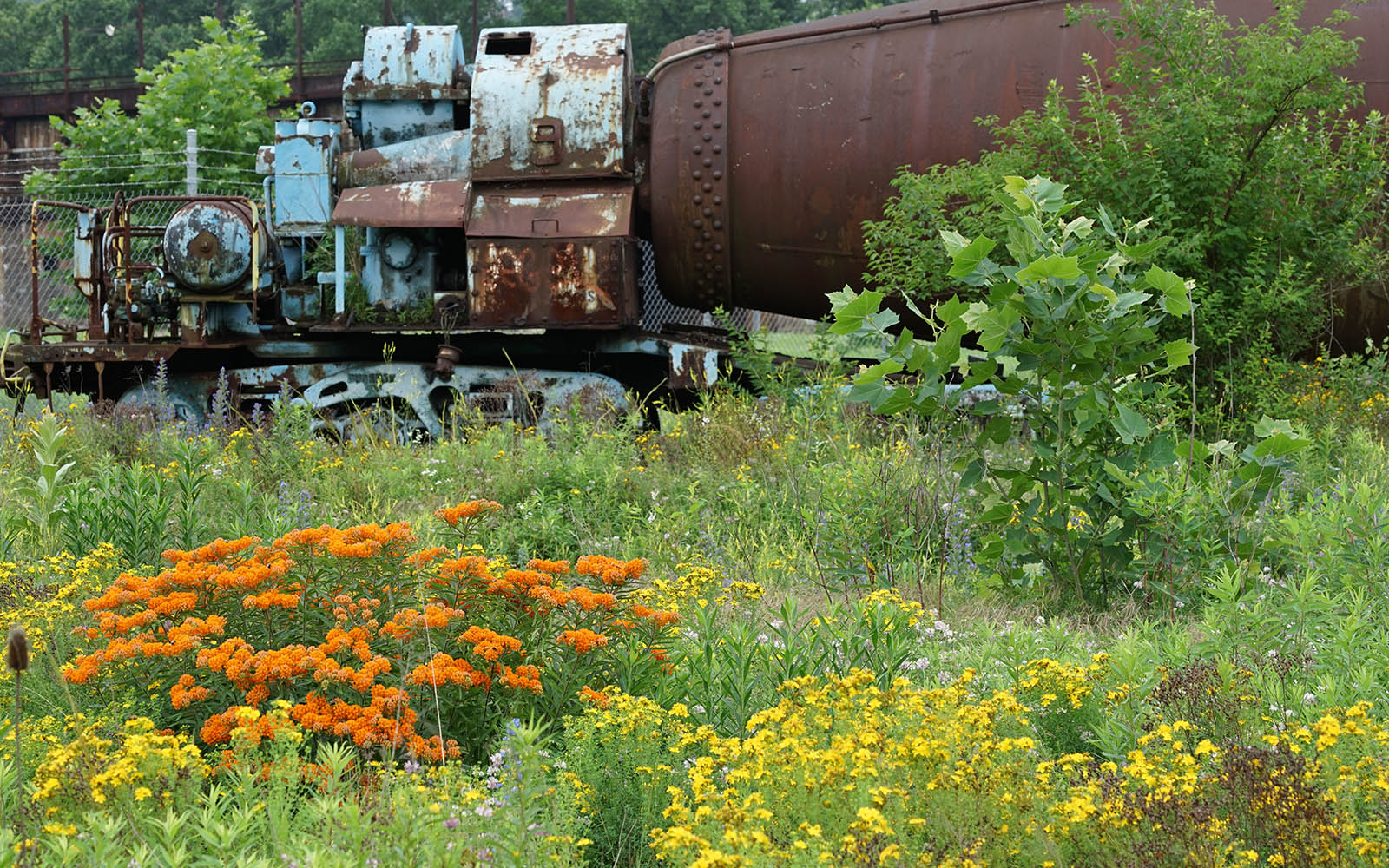
By Ron Baraff, Director of Historic Resources and Facilities | Image of the Iron Garden at the Carrie Blast Furnaces
 Nature’s Way of Reclaiming a Built Environment
Nature’s Way of Reclaiming a Built Environment
When we first began to do work at the Carrie Furnaces site in 2010 we were faced with a landscape that had changed dramatically over the years. What was once barren and devoid of vegetation had become an overgrown oasis. The site was a mass of thickets—tree stands, honeysuckle, bittersweet, knotweed, and poison ivy. We made a decision that the goal was to not denude the site but to allow nature to reclaim portions of the site—to green it up, but not interfere with the site. How should we tame and manage the landscape without damaging nature’s remarkable work?
The goal was, and still remains, to create a park space within an industrial setting—highlighting the juxtaposition and reclamation without having nature interfere with the historic structures. To this end, our challenge was how to proceed with the work. What should we keep, what should go. The easy decisions were related to the plants growing on the structures, which are still a challenge to this day, and those that made it difficult to access historic / tour areas around the site. The more difficult decisions were what do we do the areas that were more densely grown, unstable, or hard to access.
The first and most obvious step was to save some trees to use them for shade along the tour route. But there were even bigger challenges; we had areas on the site that we could not mow or easily access due to concrete, rebar, twisted pieces of metal etc. What is now known as the “Iron Garden” was one of those areas. It was during this time, as we were debating the merits of the use of the eastern portion of the site, that we realized how beautiful the fields were and how they created an interesting contrast to the industrial site.
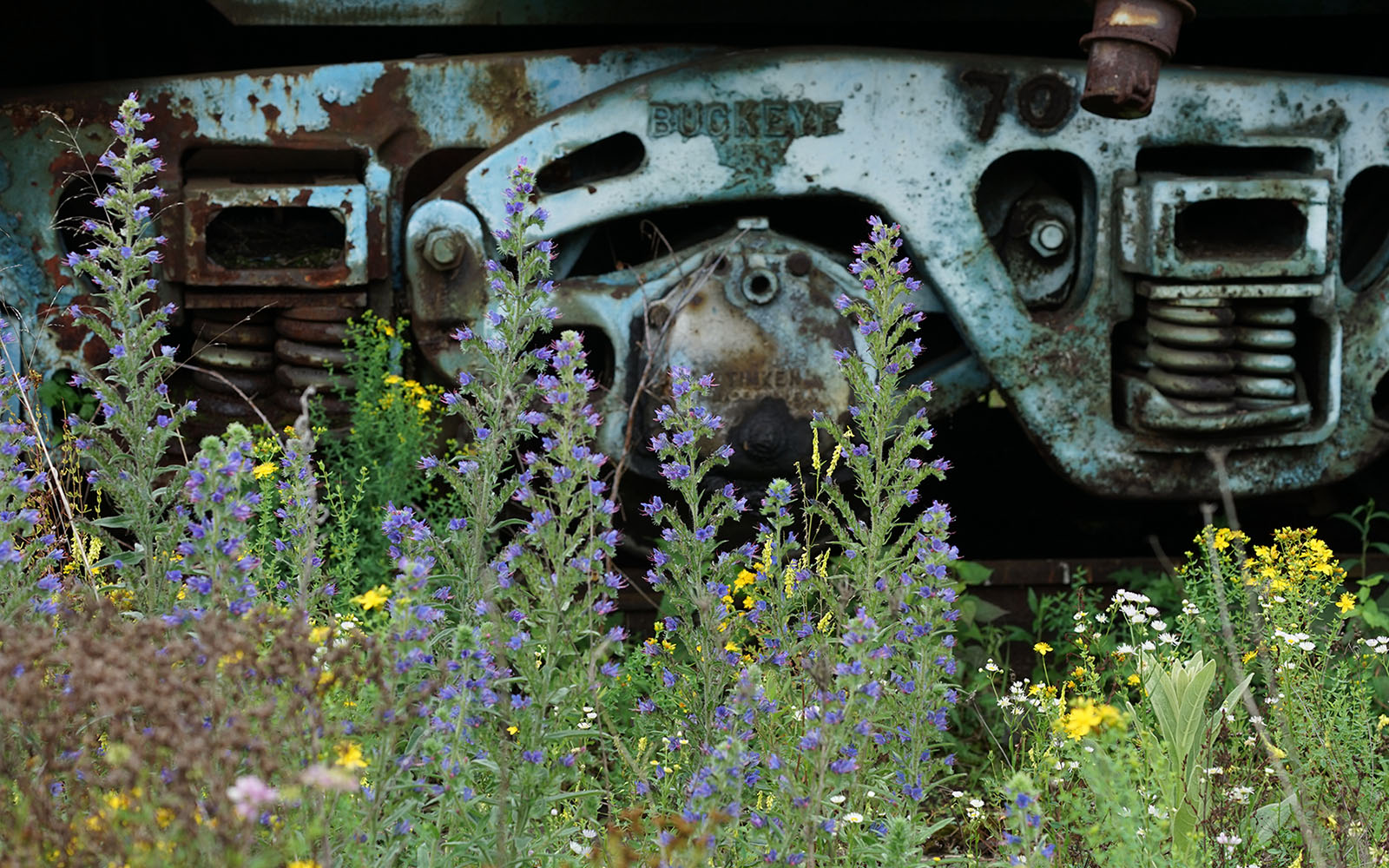 We originally looked at ways to make the northern end the eastern portion a parking lot and create a trail through the treed meadow to the ore yard. In July of 2010, Rick Darke found us. Rick Darke is a renowned landscape design consultant, author, lecturer, and photographer who specializes in urban parks and community places that celebrate the resiliency of the landscape. He had seen the site while he was taking a helicopter survey ride with people from the Pittsburgh Botanic Garden and Fallingwater. He asked his one of companions on the trip, Ann Talarek, if she could arrange a visit. He contacted us and I brought them into the site for a tour. We spent time walking around discussing the future of the site, how do want to use now? How to use it in the future?
We originally looked at ways to make the northern end the eastern portion a parking lot and create a trail through the treed meadow to the ore yard. In July of 2010, Rick Darke found us. Rick Darke is a renowned landscape design consultant, author, lecturer, and photographer who specializes in urban parks and community places that celebrate the resiliency of the landscape. He had seen the site while he was taking a helicopter survey ride with people from the Pittsburgh Botanic Garden and Fallingwater. He asked his one of companions on the trip, Ann Talarek, if she could arrange a visit. He contacted us and I brought them into the site for a tour. We spent time walking around discussing the future of the site, how do want to use now? How to use it in the future?
On this and subsequent visits, we formed a great working friendship as he helped us to provide context and meaning for the “project” and create a more formalized approach to what we had already been doing intuitively. We lead our first public, environmental / wild garden tours shortly thereafter. It was a collaborative effort between Rick and myself to look at what has happened over time as nature and industrial / postindustrial landscapes converge.
The goal was to introduce people to this idea of succession and how to manage the landscape while creatively editing it. It was during this time that Rick Darke, Dave Couch, Rick Rowlands, and I laid out the pathway and the garden room within the garden area. Our goal was to create a visually stunning reveal of the industrial site within a green space where people could slow down and enjoy the sites natural landscape and garden.
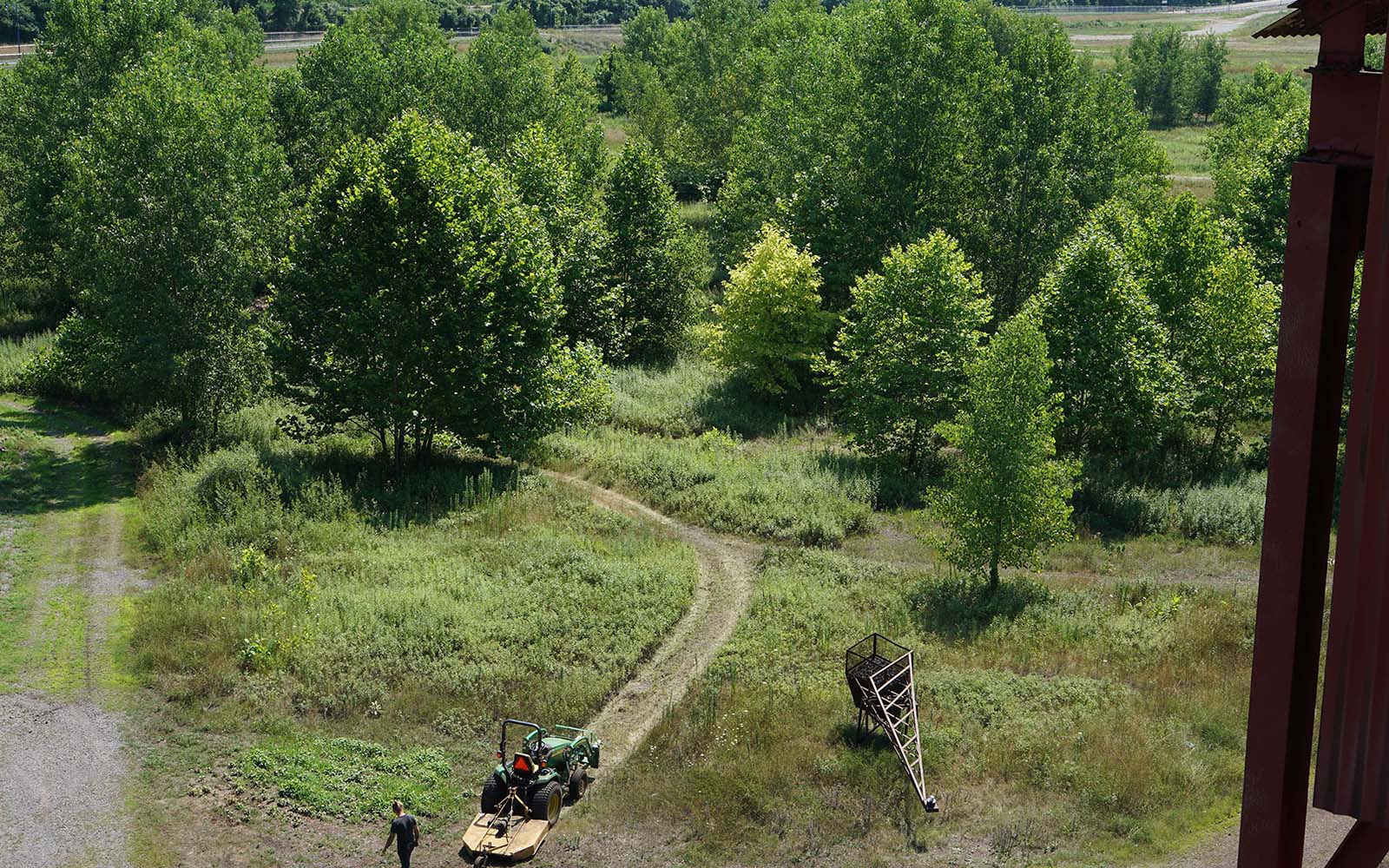
During one of the Rick Darke tours in October of 2013, Joanne van Linden, a visitor who happened to be a local master gardener, talked with us about her interest in the project. I invited her and her master gardener class to come assist us with plant identification so that we could create a database and a finding aide for assisting educational tours and our tour guides. I wanted people to understand what they were seeing and experiencing within the landscape, these plants were not just weeds, they were not “invasive” but were natures way of reclaiming man’s built environment.
The following spring (2014) the Master Gardener class came in as a group and we started working together to do plant identification in some test fields throughout the site. Over the course of the season the idea for what became “the Iron Garden” evolved. With the assistance of the gardeners and Addy Smith-Reiman, Josh Reiman (sculptor on staff at CMU) was brought into the discussion. From there we set about creating a project to create cast iron plaques interpreting the flora and fauna of the site—creating a physical interpretative walking trail through the garden area. The gardeners and a number of regional artists did an amazing job of researching, creating, and casting the iron plaques which culminated in the Casting the Iron Garden event in October of 2014.
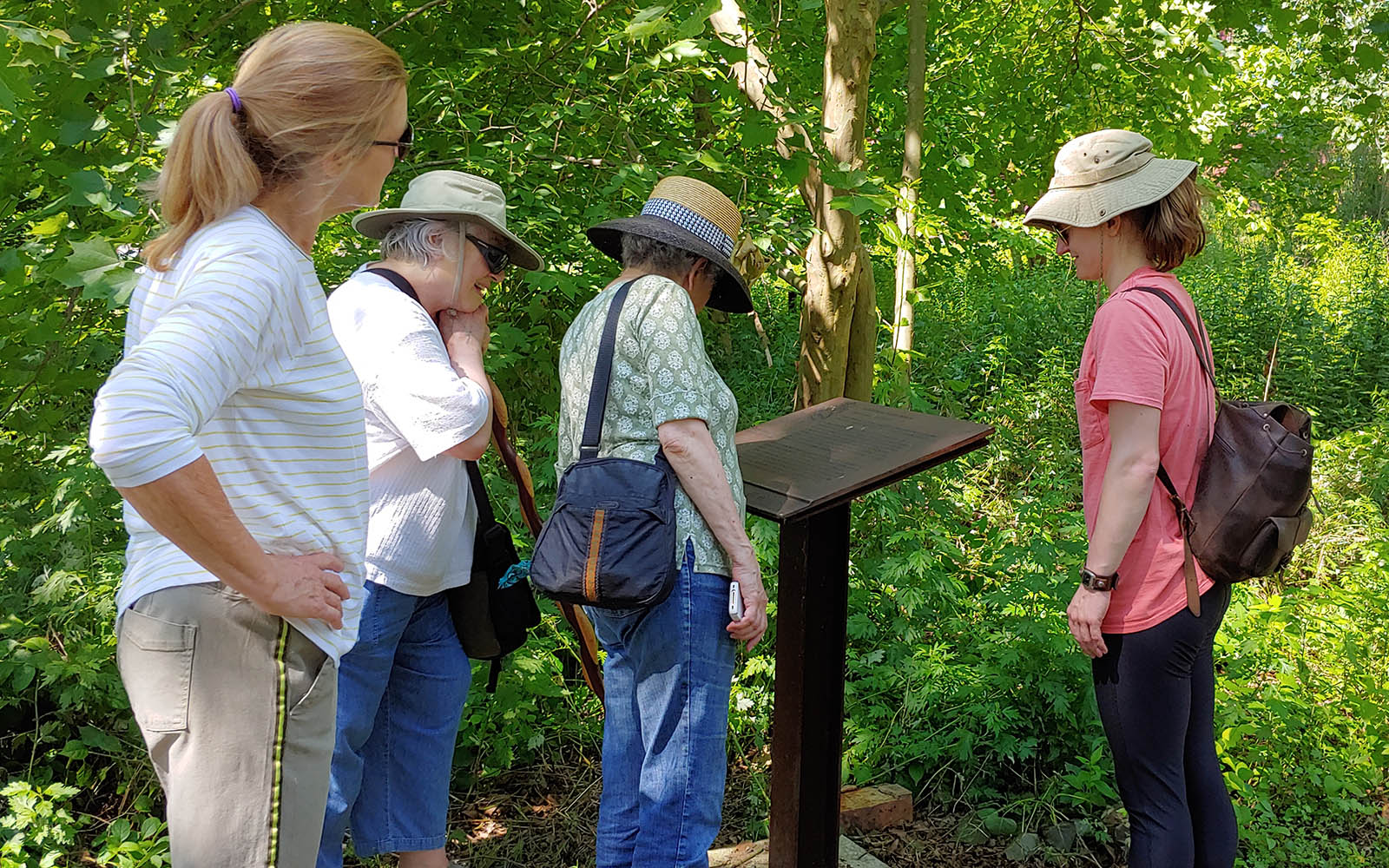
With the plaques in place and with further assistance from Rick Darke, Rivers of Steel formalized the project under two banners—the Iron Garden and Addition by Reduction. The latter project’s goal was an still is to create a template not just for our site, but for other public spaces throughout the country and beyond. The lessons of Carrie and the project could be used to show that by creative management and editing of a wild space, that nature can preserved and stewarded in a harmonious, economical, and responsible manner.
In 2017, Rivers of Steel partnered with six other regional gardens to create the Pittsburgh Garden Trail. Offering different landscapes, uses, settings, and species throughout the Trail’s unique destinations, the Garden Trail aims to inspire by highlighting the beauty and ecological diversity of western Pennsylvania. From cultural institutions like Phipps Conservatory and Botanical Gardens and The Frick Pittsburgh to the lesser-known gardens including the Rodef Shalom Biblical Garden and the Chatham University Arboretum, the collection of garden locations on the Pittsburgh Garden Trail gives visitors a chance to see the city in new and unexpected ways. Rivers of Steel is proud that our unique, postindustrial, wild garden has become recognized as one of the region’s botanical assets.
Tours of the Iron Garden are a popular option for groups, but are also a great resources for students and classrooms. Public tours are generally offered on the second Sunday of each month during the summer tour season. Right now, of course, the garden is closed—as is the entire Carrie Blast Furnaces site—but we welcome you to join once the pandemic restrictions open up. In the meantime, enjoy some additional images of the site from throughout the years.
Guide to Images
Featured Image: Wildflowers and Bottle Car / Rick Darke
Image 1: Ron Baraff / Richard Kelly
Image 2: Wildflowers and Detail of Bottle Car / Rick Darke
Image 3: Cutting a Path Through the Iron Garden / Rick Darke
Image 4: Visitors Examine an Iron Plaque / Rivers of Steel
Images in Gallery
(Left to Right)
Image 1: The Iron Garden Path / Rick Darke
Image 2: Yellow and Purple Wildflowers / Rick Darke
Image 3: Orange Wildflowers / Rick Darke
Image 4: Ornamental Grasses / Rivers of Steel
Images 5 & 6: Rick Darke Leading a Tour, 2019 / Rivers of Steel
Image 7: The Green Room of the Iron Garden / Richard Kelly
Image 8: Carrie Furnace #6 from the Green Room / Richard Kelly
Images 9 & 10: Eric Horgos Tour of the Iron Garden, 2018 / Rivers of Steel

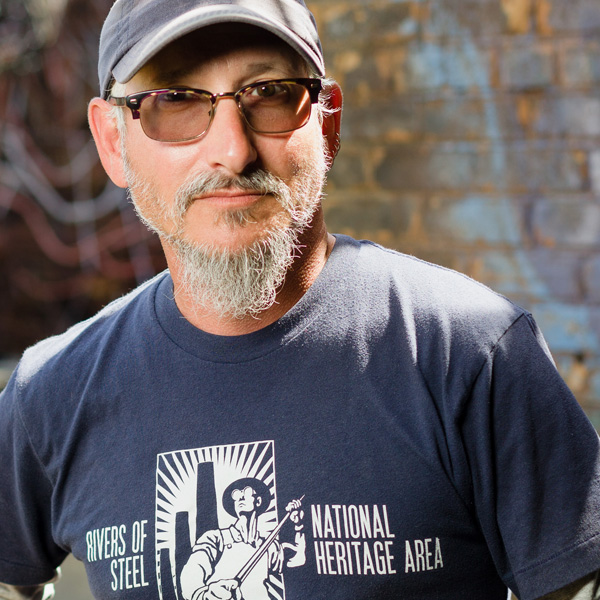 Nature’s Way of Reclaiming a Built Environment
Nature’s Way of Reclaiming a Built Environment